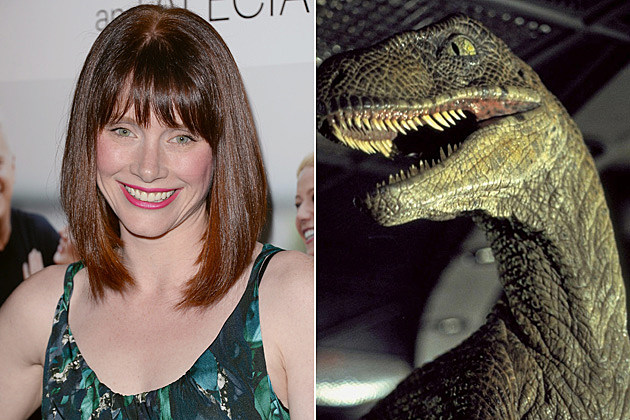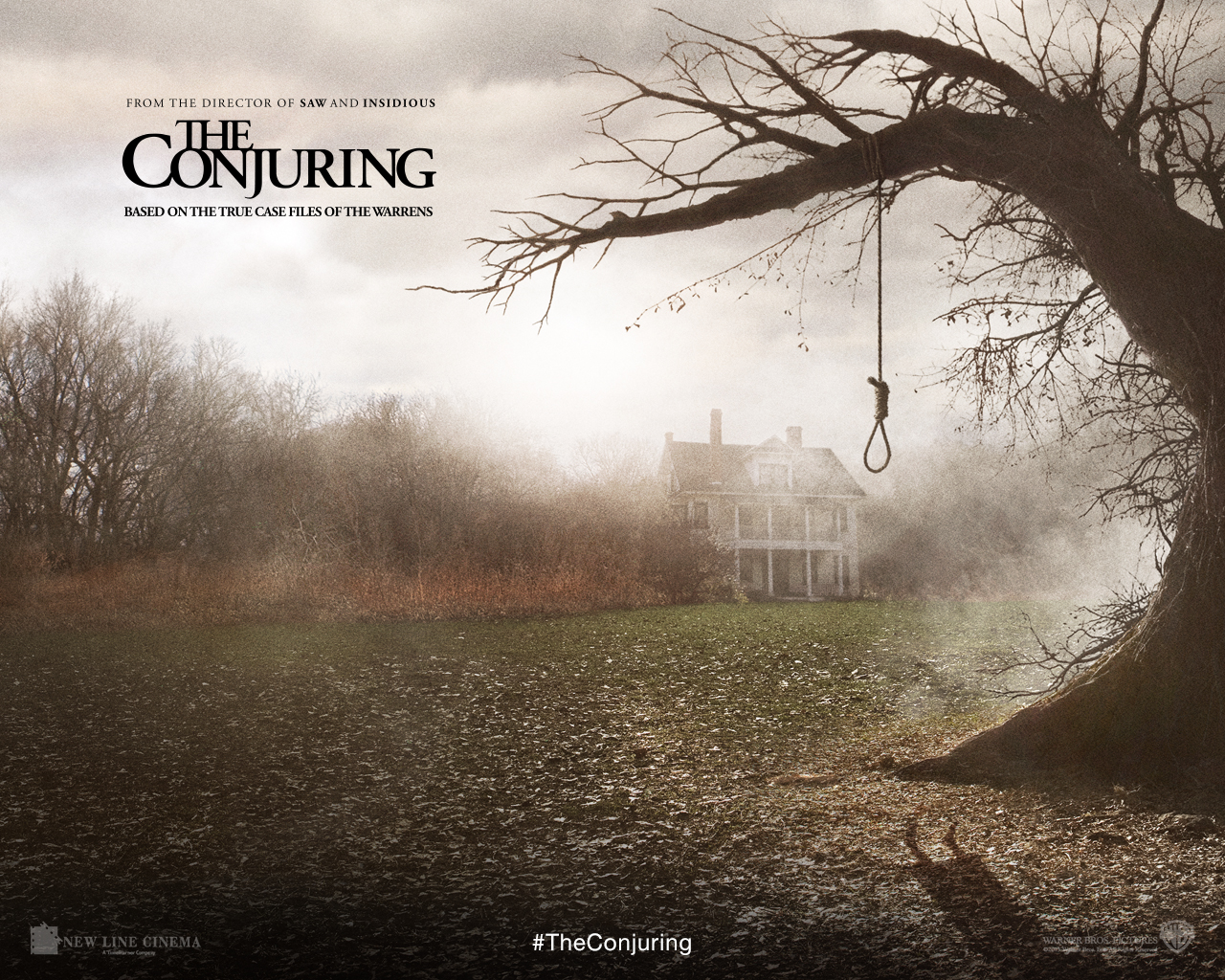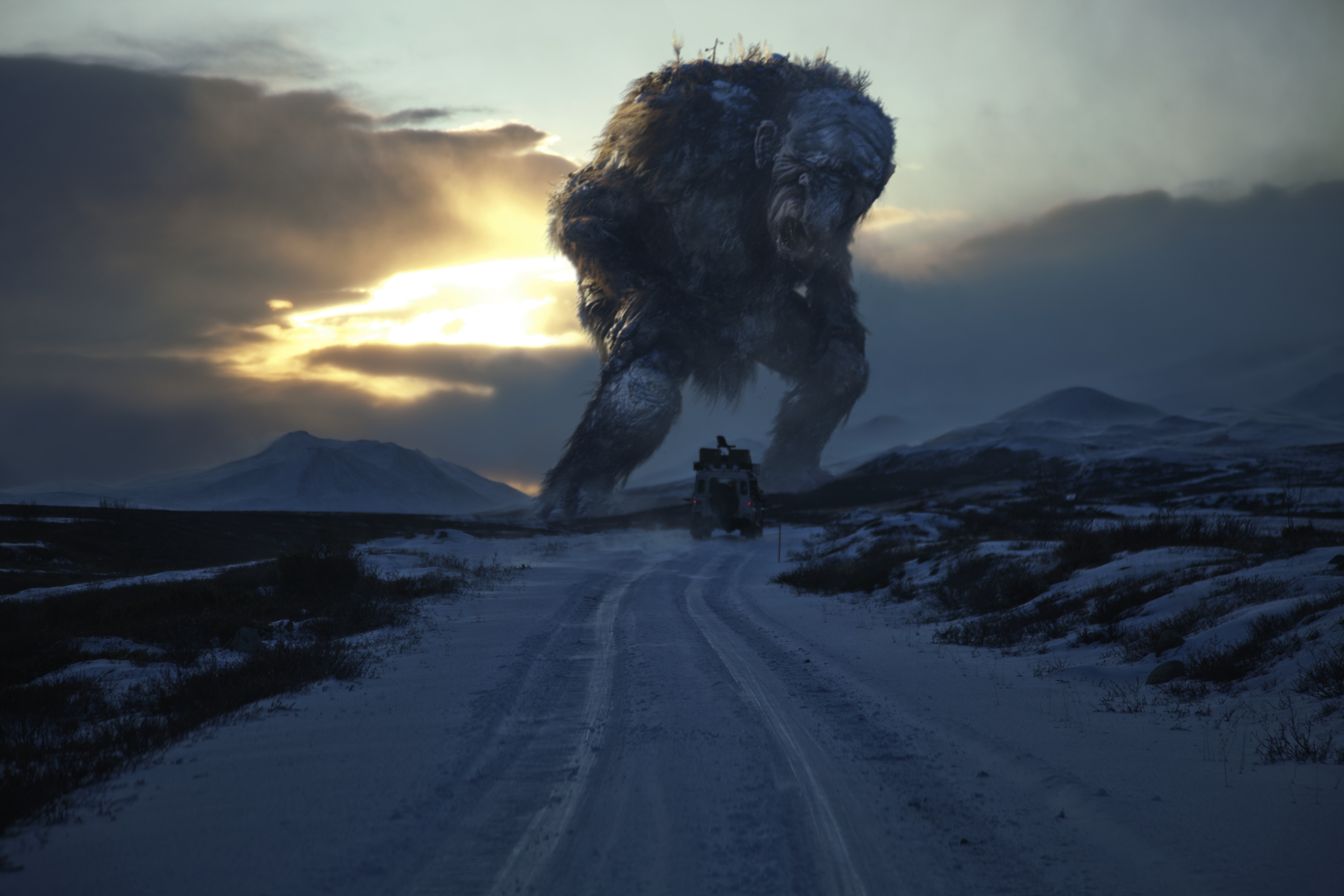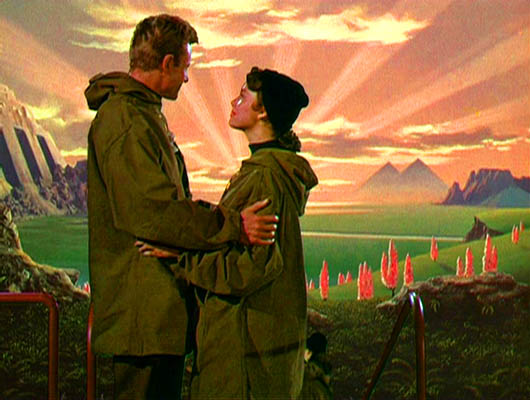Hoofdstuk 5:
Apocalyptiek: atoombommen en het Einde der Tijden
Zoals
opgemerkt in Hoofdstuk 1 was angst een bepalend kenmerk van de
Amerikaanse samenleving in de vijftiger jaren. Angst voor het
communisme was alom tegenwoordig, vooral toen de situatie in Korea
tot een werkelijke oorlog escaleerde. Maar sterker nog was de angst
voor de bom. Dit was een geheel nieuw soort angst, een collectieve
vrees voor een plotseling einde aan alles dat men kende. De bom kon
zonder waarschuwing inslaan, waar dan ook in Amerika, en in korte
tijd een groot gebied verwoesten. Sterker nog, in een atoomoorlog
zouden kernwapens in een ommezien de menselijke beschaving van de
aardbodem kunnen vegen, of zelfs al het leven op Aarde uit kunnen
roeien. Hoe grootschalig een dergelijke vernietiging zou kunnen zijn
wist de gemiddelde Amerikaan niet, maar dat het een reëel gevaar
betrof was zeker. Ellwood verwoordt de angsten in dit tijdperk als
volgt:
Many
now living still remember that in those days, as children or young
people, they did not expect to live to full adulthood. They would die
in a nuclear holocaust, or be sent to some far-off battlefield where
the cold war had become hot, like Korea, and die there.
Vergelijkbaar
stelt Brosnan:
Prior
to Hiroshima and Nagasaki talk of splitting the atom was, to the man
in the street, just another esoteric subject for egghead scientists
to indulge in, but after the war the general public quickly realized
that atomic power could destroy not only cities but the whole world.
Almost overnight the assumed permanency of life on earth had
vanished, and people were forced to live with the traumatic awareness
that total, worldwide obliteration was a strong possibility in the
near future.
Uiteraard
haakte Hollywood in op dit thema van het Einde der Tijden, of in
ieder geval het einde van de beschaving zoals Amerika dat kende.
Hoewel het in sciencefictionkringen niet een geheel nieuw thema
betrof,
was het grotendeels onontgonnen terrein in de filmindustrie.
Desondanks, binnen enkele jaren ontstond er een diversiteit aan
representaties van dergelijke Apocalyptiek, divers zowel in haar
representatie per subgenre als binnen de subgenres zelf. In bijna
alle gevallen van apocalyptische sciencefictionfilms speelde religie
een rol, variërend van slechts sporadisch aanwezig tot nadrukkelijk
in beeld. Eens te meer wordt bovendien de nadruk gelegd op de
definitie van “vooruitgang”, technologische ontwikkeling die de
mensheid veel goeds beloofd maar ook grote nadelen met zich
meebrengt.
Het
sciencefictiongenre in de jaren vijftig toont verschillende maten van
verwoesting, van ‘grootschalig’ tot ‘totaal’. In de meeste
gevallen is wetenschap, direct of indirect, de boosdoener. Het geval
van grootschalige verwoesting is terug te vinden in bijna het gehele
‘terrestrial creature’
subgenre en in de meer agressieve variatie op het ‘alien
invasion’ subgenre dat de aliens als
veroveraars toont. Vooral in het ‘terrestrial
creature’ subgenre is de connectie met de
atoombom expliciet: in het merendeel van de films uit dit subgenre
worden de wezens ofwel gecreëerd door de straling veroorzaakt door
atoomproeven (It Came from Beneath the Sea,
Them!), ofwel gewekt
door atoomproeven (The Beast from 20,000
Fathoms, The Giant
Behemoth, The Deadly
Mantis). Dit subgenre is het duidelijkst in
haar opvattingen met betrekking tot de atoombom: de bom brengt
grootschalige verwoesting met zich mee die hele steden in de as legt.
Minder concreet is zij in haar oordeel over de wetenschap die de bom
heeft geschapen; wetenschap wordt in dit subgenre dan ook zelden
eenzijdig gerepresenteerd. De films uit het subgenre maken doorgaans
het statement dat wetenschap weliswaar zulke problemen voortbrengt,
maar ze ook oplost, waardoor een tweezijdig beeld van wetenschap
ontstaat. De wetenschap neemt verantwoordelijkheid voor het door haar
aangerichte kwaad, en presenteert een plan of uitvinding om het kwaad
weer uit te roeien. Het gaat niet om de wetenschap zelf, maar om
diegenen die haar gebruiken, lijkt dit subgenre te beweren.
Deze
boodschap wordt verder benadrukt in het ‘alien
invasion’ subgenre, waarin we voorbeelden
zien van zowel het positieve gebruik als het misbruik van wetenschap.
Aan de ene kant zijn er enkele wezens die aantonen dat wetenschap ten
goede gebruikt kan worden en zelfs een Utopia kan voortbrengen (The
Day the Earth Stood Still, Red
Planet Mars). Aan de andere kant zijn er de
buitenaardsen die hun wetenschap ten kwade gebruiken en de mensheid
met geweld willen onderwerpen, wat opnieuw gepaard gaat met
grootschalige verwoesting (The War of the
Worlds, Earth vs the
Flying Saucers). Ook dit subgenre levert een
tweezijdig beeld van wetenschap, waarin zowel een beeld getoond wordt
van de voordelen als de nadelen van verregaande technologische
ontwikkeling (ofwel een vreedzaam Utopia, of een versmelting van
biologie met technologie dat leidt tot ontmenselijking).
Naast de ‘grootschalige verwoesting’ is er de ‘totale
verwoesting’ in het genre, die slechts in een paar films
aangetroffen wordt. De films die hier als voorbeeld kunnen dienen
zijn Day
the World Ended
(USA:
Roger Corman, 1956), Five
(USA:
Arch Oboler, 1951), Target
Earth,
en On
the Beach
(USA: Stanley Kramer, 1959). In deze films wordt de mogelijke wereld
na de ramp – de ‘Atomic Holocaust’, de ‘collective
incineration and extinction which could come at any time, virtually
without warning’
waar men voor vreesde in de vijftiger jaren – behandeld. Een
allesverwoestende nucleaire oorlog of soortgelijke ramp heeft een
handjevol overlevenden achtergelaten, die met elkaar moeten leren
leven. (Er zou hier sprake van een potentieel vijfde subgenre in het
sciencefictiongenre kunnen zijn, ware het niet dat de twee films die
zich niet onder één van de andere subgenres laten plaatsen, On
the Beach
en Five,
een zeer laag gehalte sciencefiction omvatten, en zich beperken tot
het afschilderen van de diverse gedaantes van het menselijk wezen en
de psychologie van het omgaan met het einde. Hoewel zij een
duidelijke afspiegeling van de angst voor de bom vormen, worden zij
hier niet behandeld, door hun twijfelachtige status als
sciencefiction.)

Hoe
verhoudt religie zich tot de verschillende visies op wetenschap in
films die Apocalyptische vormen aannemen? Zoals eerder vermeldt in
paragraaf 4.2 (p. 44) kan gesproken worden van de thema’s
‘wetenschap als religie’ en ‘wetenschap versus religie’.
Opmerkelijk is de prominentie van ‘wetenschap als religie’ in
deze Apocalyptische sciencefictionfilms. Hoewel wetenschap doorgaans
de verwoesting heeft gecreëerd (via de atoombom), werpt zij zich in
veel gevallen op als redder van de mensheid. In Day
the World Ended heeft een wetenschapper, die
de bui al zag hangen, zich verschanst in een fall-out vrije bunker
waarin hij een paar overlevenden opvangt. In Target
Earth, zoals in meer ‘alien
invasion’ films, rekent de menselijke
wetenschap uiteindelijk af met haar boosaardige buitenaardse
tegenhanger. In zulke films redt “gewone” religie de mensheid
niet (in tegenstelling tot in een film als The
War of the Worlds), maar profileert de
wetenschap zich als datgene wat de mensheid de Apocalyps zal doen
overleven, waarbij zij zich elementen van religie eigen maakt. Zij
beschermt de wereld (Amerika) tegen kwaadaardige buitenaardse
“religies” (de verwoestende buitenaardse wetenschap als
on-Amerikaanse ideologieën). De wetenschappers worden priesters, met
eigen “rituelen” en een eigen taal die voor niet ingewijden
onbegrijpelijk is. Wetenschap lijkt de functie van de kerk over te
nemen en biedt een betere, comfortabele wereld voor iedereen die haar
als autoriteit accepteert. Door middel van technologische vooruitgang
levert zij het betere leven dat zij de mensheid belooft. Ook Vieth
maakt deze vergelijking tussen wetenschap en religie:
The
power of science lies in its ability to both provide answers and to
control the fundamental (that is, atomic) forces of nature. Its
practitioners are privy to that understanding and have power over
those forces. The metaphor is similar to certain religious
constructions, with science as revealed truth and scientists as
priests.
De
connectie tussen wetenschap en religie, hoewel thematisch frequent
aanwezig, wordt slechts een enkele keer expliciet aangekaart in de
films zelf. Zo beweert een wetenschapper in Invaders
from Mars dat ‘Doctors are sort of like
ministers, you can tell them anything’, wanneer een jongetje aan
komt lopen met het verhaal dat zijn ouders door aliens zijn
overgenomen. Evenals religie presenteert wetenschap een wereldbeeld
dat een waarheid voor ogen staat en met deze waarheid de mens van
dienst wil zijn. Echter, wetenschap baseert zich op de directe
realiteit, niet op de vermeende gebeurtenissen van duizenden jaren
eerder. Wetenschap concentreert zich op het hier en nu, net zoals
haar resultaten (de verregaande technologische ontwikkeling in de
jaren vijftig) afgeleverd worden in het hier en nu. De wetenschap is
daardoor niet zozeer spiritueel, maar substantieel. Desondanks tracht
zij eenzelfde geestelijke troost en vrede te bewerkstelligen als
“echte” religies, door zich in te zetten voor een betere wereld
voor de gehele mensheid. Ook critici in de jaren vijftig zagen een
parallel tussen wetenschap en religie; vooral schrijvers in
Godsdienststudies vonden een dergelijke vergelijking beangstigend.
Ellwood haalt als voorbeeld Robert Fitch aan, die waarschuwt voor
[…]
a “new priesthood of science”, with scientists as “a new sort
of religious order”, set apart from the rabble by “a discipline,
a language”, and an attitude” of contemptus
mundi
– disdain for the world of ordinary people – though their
language was not Latin but the arcane hieroglyphics of mathematics.
Their temptations, like that of any priestly class, were spiritual
pride, and the desire to assume temporal authority, being ethical
purists and devoutly believing that such power would be for the good
of all.
Zulke
kritiek op wetenschap was niet geheel ongegrond. Evenals religie kan
ook zij vervormd of misbruikt worden en ingezet worden voor
doeleinden die haaks staan op haar bedoelingen. De impact van haar
misbruik is echter groter dan religieus misbruik, zeker in het
tijdperk van de atoombom. Bovendien, als wetenschap de mensheid al
redt, dan nog is de wereld onherroepelijk veranderd, zo ingrijpend is
haar invloed.
In het sciencefictiongenre wordt dit laatste punt zowel bevestigd als
ontkracht: verandering door de invloed van wetenschap kan
catastrofaal zijn, maar ook positief of zelfs noodzakelijk. Het is
hier gepast de blik opnieuw op het ‘man
into space’
subgenre te richten.

De
grootschalige verandering die wetenschappelijke vooruitgang teweeg
kan brengen wordt zowel op positieve als negatieve wijze
geïllustreerd in het ‘man into space’
subgenre. De positieve manieren, de mogelijkheden van ontdekking en
verovering van de ruimte en de welvaart die dit de mensheid kan
opleveren, zagen we al in Hoofdstuk 2. De negatieve kanten, naast het
mogelijke conflict met religie waar het gaat om het domein van God,
nemen ook in dit subgenre Apocalyptische vormen aan. In plaats van
een Aardse Apocalyps maakt men hier echter gebruik van, zoals ik het
noem, de ‘Alien Apocalyps’:
de weergave van stervende of verwoeste buitenaardse beschavingen
veroorzaakt door wat wetenschappelijke vooruitgang had moeten zijn.
Zo tonen de films de wonderen van de wetenschap, het reizen in de
ruimte, maar waarschuwen zij tegelijk ook voor het achterliggende
gevaar dat misbruik van wetenschap kan vormen. Voorbeelden van de
‘Alien Apocalyps’
zijn te vinden in Forbidden Planet,
waarin een technologisch geavanceerde beschaving een staat van Utopia
had bereikt, om vervolgens ten onder te gaan aan haar eigen
sluimerende primitieve driften: wetenschap kan een perfecte wereld
opleveren, maar dit is zinloos zolang deze wereld bevolkt wordt door
wezens die zelf imperfect zijn. This Island
Earth toont een beschaving die in een staat
van oorlog is met een naburige planeet, waardoor wetenschap slechts
wordt aangewend voor het vervaardigen van wapens en de planeet zijn
ondergang tegemoet gaat. Andere films houden het dichter bij de
realiteit van de jaren vijftig en plaatsen de atoombom in deze
context. Zowel Flight to Mars
als Rocketship X-M
tonen een post-apocalyptische wereld geschapen door een atoomoorlog.
In het eerste geval heeft de beschaving zich gedeeltelijk gehandhaafd
maar wordt zij nu geconfronteerd met tekort aan grondstoffen die zij
vervolgens op de Aarde willen buitmaken (het exacte tegendeel van de
situatie in Conquest of Space,
waarin de mensheid zelf de ruimte intrekt op zoek naar grondstoffen).
In het tweede geval zijn de overlevenden gedegenereerd tot blinde
mutanten die in een staat van primitieve barbarij leven. De boodschap
is in alle gevallen duidelijk: kijk wat de wetenschap deze
beschavingen heeft gebracht en houd in het achterhoofd dat zij zowel
voordelen als nadelen kan brengen. Het is aan de mens zelf ervoor te
waken dat wetenschap niet misbruikt wordt.
Naast
de ‘Alien Apocalyps’
toont het ‘man into space’
subgenre in enkele gevallen ook een menselijke Apocalyps. Daarbij is
wetenschap de grote redder van de mensheid in plaats van de
boosdoener: wetenschap helpt de mensheid overleven, zowel in minder
gehaaste omstandigheden (het opraken van aardse grondstoffen in
Conquest of Space) als
in situaties van direct gevaar. Ter illustratie, het meest concrete
voorbeeld van de wetenschap die de mensheid van de Apocalyps redt en
naar een betere wereld leidt treffen we aan in When
Worlds Collide, waarin wetenschap sterk de
vorm van een religie aanneemt. Deze film vormt een geval apart in het
kader van ‘totale verwoesting’, aangezien zij ‘totaal’ zeer
letterlijk neemt en zich niet beperkt tot de verwoesting van de
menselijke beschaving, maar van de planeet zelf. Daarmee vormt zij
het ultieme voorbeeld van de noodzaak voor de mens om de ruimte in te
trekken, zoals besproken in paragraaf 2.1. In When
Worlds Collide wordt de hele Aarde vernietigd
in een botsing met de ster Bellus. Haar satelliet, de planeet Zyra,
scheerde enkele dagen eerder daarvoor rakelings langs de Aarde, en
een klein aantal mensen weet in een raket naar Zyra te vluchten om
daar een nieuwe menselijke beschaving op te bouwen. De (Amerikaanse)
wetenschap had de Apocalyps voorspeld: zij zag de planeet als eerste
naderen en waarschuwde de mensheid, maar werd niet geloofd door
wetenschappers uit andere landen. Dankzij het kapitalistische
Amerikaanse systeem – het persoonlijke kapitaal van een rijke
grootindustrieel die de boodschap wel serieus neemt – kon zij een
reddingsplan in werking stellen: de constructie van een ruimteschip
dat, als de Ark van Noach (de film zelf legt deze link ook
expliciet), een handjevol mensen kan redden. Uiteindelijk slaagt het
schip erin gelanceerd te worden vlak voor de Aarde ten onder gaat, en
komt het aan op Zyra. Eenmaal geland op haar oppervlak blijkt deze
planeet een paradijselijk oord, een hemels landschap met groene
velden, bloeiende bomen, zonnestralen en witte wolkjes. Zo redt de
wetenschap haar getrouwen (immers, alleen mensen die bijgedragen
hebben aan de bouw van het schip mogen mee) van de totale ondergang.

Geproduceerd
door George Pal blijft de film uiteraard niet gespaard voor religieuze
connotaties (in grotere hoeveelheden dan andere Apocalyptische
films), evenals de jaren hierop zou gebeuren met The
War of the Worlds en Conquest
of Space. De film opent met een shot van de
Bijbel, waarin te lezen is (terwijl hymnische muziek klinkt op de
achtergrond):
And
God looked upon the earth, and behold, it was corrupt; for all flesh
had corrupted his way upon the earth. And God said unto Noah, the end
of all flesh is come before me; for the earth is filled with violence
through them: and, behold, I will destroy them with the earth…
Dit
citaat impliceert dat deze Apocalyps een straf van God is. De
verwoester, de planeet Bellus (wat een connotatie oplevert met het
Latijnse woord voor 'oorlog' en als zodanig al een beeld van
verwoesting suggereert) komt ook uit de “hemelen”, maar wordt in
de film zelf verder niet aan God toegeschreven. In tegenstelling tot
de andere variaties op het Einde der Tijden in het
sciencefictiongenre uit deze periode is hier sprake van een
natuurlijke verwoester, niet van een technologische verwoester die
door de wetenschap is voortgebracht. Als God de mensheid inderdaad
straft in deze film, doet Hij dat niet voor haar wetenschappelijke
transgressies. Hij stelt de “sekte van de wetenschap” immers toe
om het “paradijs” te bereiken en daar een nieuwe menselijke
samenleving op te bouwen. ‘[…] we are hoping that with God’s
help and guidance, a few may do exactly that’, stelt de
wetenschapper die de Verenigde Naties toespreekt, en hij krijgt
gelijk. Als het Einde der Tijden later in de film daadwerkelijk
nadert en Zyra dichterbij komt, wat gepaard gaat met natuurrampen en
grootschalige verwoesting, komt ook de rest van de mensheid tot
inkeer.
‘Never
before in the history of the world has humanity felt so close to God.
As Zyra inexorably rushes toward us, perhaps to destroy the Earth,
men and women of all races and creeds pause to think, to pray and to
atone’, wordt over de radio vermeldt. Maar
het is te laat voor de rest van de mensheid. De wetenschap heeft de
noodzaak om maatregelen te treffen verkondigd, maar dat gebeurde
niet. Alleen dat deel van de mensheid dat geloof had in de wetenschap
(en dan alleen de ware
wetenschap, want ook de wetenschappers waren verdeeld) zal gered
worden.
Wetenschap
en religie gaan hier hand in hand: niet voor niets zien we halverwege
de film een close-up van een boekenkast waarin de Bijbel naast
wetenschappelijke boeken (onder andere Anatomy
of the Human Body,
Practical
Mathematics
en Standard
Agriculture)
staat, maar wel twee keer zo dik is als de andere boeken. Ook de
Bijbelse opening van de film wekt de indruk dat religie de overhand
heeft: hoewel het niet als zodanig gesteld wordt in de film, gunt God
het de wetenschappers (Noach) een Ark te bouwen, de ondergang te
overleven en het Paradijs te betreden.
God staat welwillend tegenover de wetenschap, maar Zijn macht
overheerst nog steeds de macht van de wetenschap.


























